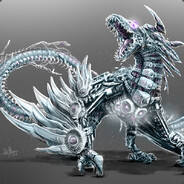Imaging dual boot drive?
Go to solution
Solved by ahuckphin,
As I wrote this topic, the idea to try to use Macrium Reflect to image a drive that contains Ubuntu and Windows came into my brain.
Success!
I previously thought this could not be done as Macrium Reflect does not support Linux file systems but upon double googling, turns out Macrium Reflect just can't be installed onto a Linux computer
-
Topics
-
1
-
1
-
6
-
EzioWar ·
Posted in Operating Systems1 -
4
-
1
-
Pryme ·
Posted in Power Supplies8 -
EzioWar ·
Posted in CPUs, Motherboards, and Memory1 -
5
-
WallacEngineering ·
Posted in PC Gaming0
-

.thumb.jpg.cb20a8221fe78d0102258b1bdc1335ad.jpg)
















Create an account or sign in to comment
You need to be a member in order to leave a comment
Create an account
Sign up for a new account in our community. It's easy!
Register a new accountSign in
Already have an account? Sign in here.
Sign In Now